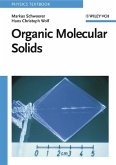Now updated--the leading single-volume introduction to solid state and soft condensed matter physics This Second Edition of the unified treatment of condensed matter physics keeps the best of the first, providing a basic foundation in the subject while addressing many recent discoveries. Comprehensive and authoritative, it consolidates the critical advances of the past fifty years, bringing together an exciting collection of new and classic topics, dozens of new figures, and new experimental data. This updated edition offers a thorough treatment of such basic topics as band theory, transport theory, and semiconductor physics, as well as more modern areas such as quasicrystals, dynamics of phase separation, granular materials, quantum dots, Berry phases, the quantum Hall effect, and Luttinger liquids. In addition to careful study of electron dynamics, electronics, and superconductivity, there is much material drawn from soft matter physics, including liquid crystals, polymers, and fluid dynamics. * Provides frequent comparison of theory and experiment, both when they agree and when problems are still unsolved * Incorporates many new images from experiments * Provides end-of-chapter problems including computational exercises * Includes more than fifty data tables and a detailed forty-page index * Offers a solutions manual for instructors Featuring 370 figures and more than 1,000 recent and historically significant references, this volume serves as a valuable resource for graduate and undergraduate students in physics, physics professionals, engineers, applied mathematicians, materials scientists, and researchers in other fields who want to learn about the quantum and atomic underpinnings of materials science from a modern point of view.
Dieser Download kann aus rechtlichen Gründen nur mit Rechnungsadresse in A, B, BG, CY, CZ, D, DK, EW, E, FIN, F, GR, HR, H, IRL, I, LT, L, LR, M, NL, PL, P, R, S, SLO, SK ausgeliefert werden.
"The text also gives more leisurely attention to the topics of primary interest to most students: electron and phonon bond structures." -- Booknews, 1 February 2011
"In this text intended for a one-year graduate course, Marder (physics, U. of Texas, Austin) comments in the preface that this second edition incorporates the many thousands of updates and corrections suggested by readers of the first edition published in 1999, and he even gives credit to several individuals who found the most errors. He also points out that "the entire discipline of condensed matter is roughly ten percent older than when the first edition was written, so adding some new topics seemed appropriate." These new topics - chosen because of increasing recognition of their importance - include graphene and nanotubes, Berry phases, Luttinger liquids, diffusion, dynamic light scattering, and spin torques. The text also gives more leisurely attention to the topics of primary interest to most students: electron and phonon bond structures." -- Reference and Research Book News, February 2011
"In this text intended for a one-year graduate course, Marder (physics, U. of Texas, Austin) comments in the preface that this second edition incorporates the many thousands of updates and corrections suggested by readers of the first edition published in 1999, and he even gives credit to several individuals who found the most errors. He also points out that "the entire discipline of condensed matter is roughly ten percent older than when the first edition was written, so adding some new topics seemed appropriate." These new topics - chosen because of increasing recognition of their importance - include graphene and nanotubes, Berry phases, Luttinger liquids, diffusion, dynamic light scattering, and spin torques. The text also gives more leisurely attention to the topics of primary interest to most students: electron and phonon bond structures." -- Reference and Research Book News, February 2011









